Thomas Amestoy
IETR
Video Quality Assessment and Coding Complexity of the Versatile Video Coding Standard
Oct 19, 2023



Abstract:In recent years, the proliferation of multimedia applications and formats, such as IPTV, Virtual Reality (VR, 360-degree), and point cloud videos, has presented new challenges to the video compression research community. Simultaneously, there has been a growing demand from users for higher resolutions and improved visual quality. To further enhance coding efficiency, a new video coding standard, Versatile Video Coding (VVC), was introduced in July 2020. This paper conducts a comprehensive analysis of coding performance and complexity for the latest VVC standard in comparison to its predecessor, High Efficiency Video Coding (HEVC). The study employs a diverse set of test sequences, covering both High Definition (HD) and Ultra High Definition (UHD) resolutions, and spans a wide range of bit-rates. These sequences are encoded using the reference software encoders of HEVC (HM) and VVC (VTM). The results consistently demonstrate that VVC outperforms HEVC, achieving bit-rate savings of up to 40% on the subjective quality scale, particularly at realistic bit-rates and quality levels. Objective quality metrics, including PSNR, SSIM, and VMAF, support these findings, revealing bit-rate savings ranging from 31% to 40%, depending on the video content, spatial resolution, and the selected quality metric. However, these improvements in coding efficiency come at the cost of significantly increased computational complexity. On average, our results indicate that the VVC decoding process is 1.5 times more complex, while the encoding process becomes at least eight times more complex than that of the HEVC reference encoder. Our simultaneous profiling of the two standards sheds light on the primary evolutionary differences between them and highlights the specific stages responsible for the observed increase in complexity.
OpenVVC: a Lightweight Software Decoder for the Versatile Video Coding Standard
May 24, 2022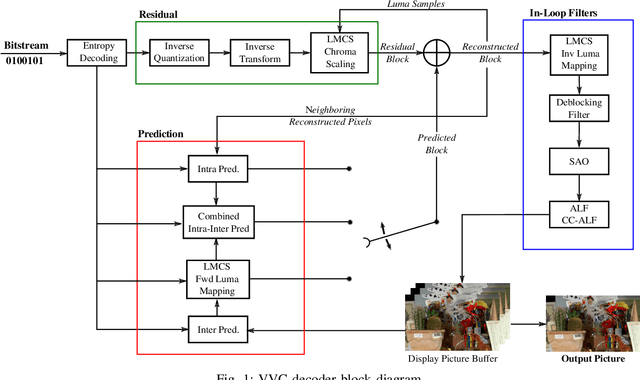
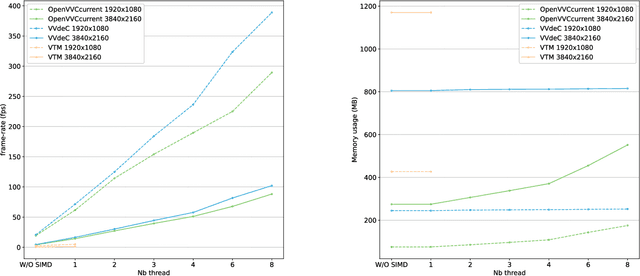
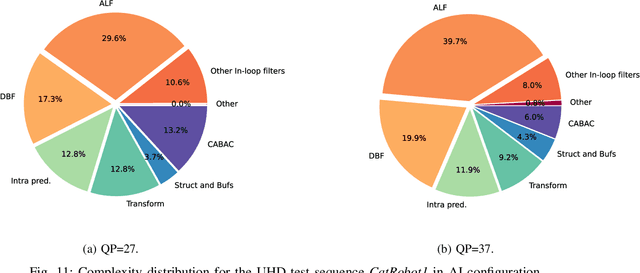
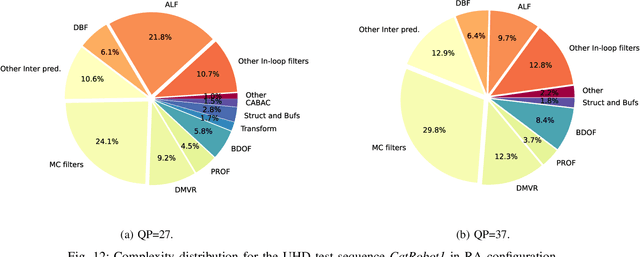
Abstract:In the recent years, users requirements for higher resolution, coupled with the apparition of new multimedia applications, have created the need for a new video coding standard. The new generation video coding standard, called Versatile Video Coding (VVC), has been developed by the Joint Video Experts Team, and offers coding capability beyond the previous generation High Efficiency Video Coding (HEVC) standard. Due to the incorporation of more advanced and complex tools, the decoding complexity of VVC standard compared to HEVC has approximately doubled. This complexity increase raises new research challenges to achieve live software decoding. In this context, we developed OpenVVC, an open-source software decoder that supports a broad range of VVC functionalities. This paper presents the OpenVVC software architecture, its parallelism strategy as well as a detailed set of experimental results. By combining extensive data level parallelism with frame level parallelism, OpenVVC achieves real-time decoding of UHD video content. Moreover, the memory required by OpenVVC is remarkably low, which presents a great advantage for its integration on embedded platforms with low memory resources. The code of the OpenVVC decoder is publicly available at https://github.com/OpenVVC/OpenVVC
Quality-Driven Dynamic VVC Frame Partitioning for Efficient Parallel Processing
Dec 29, 2020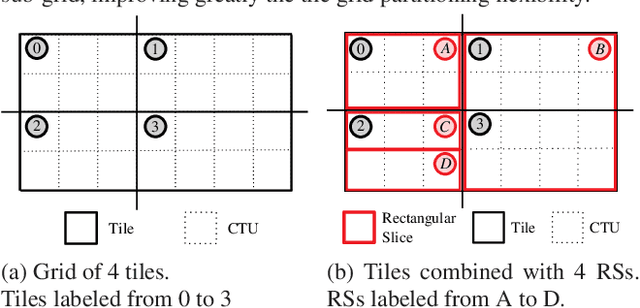
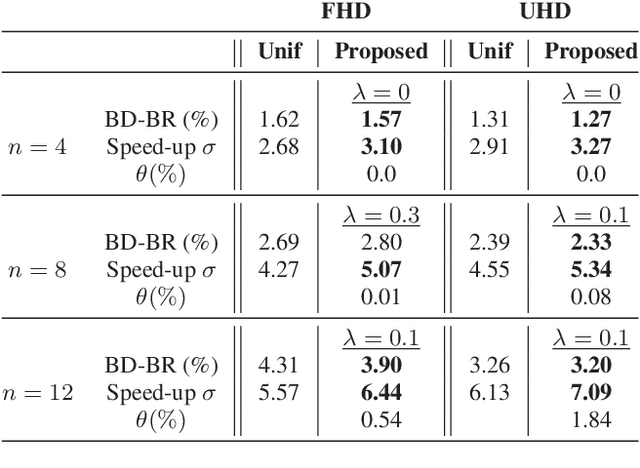
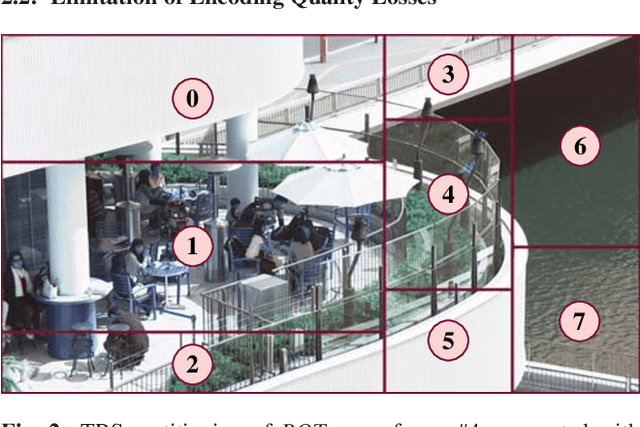
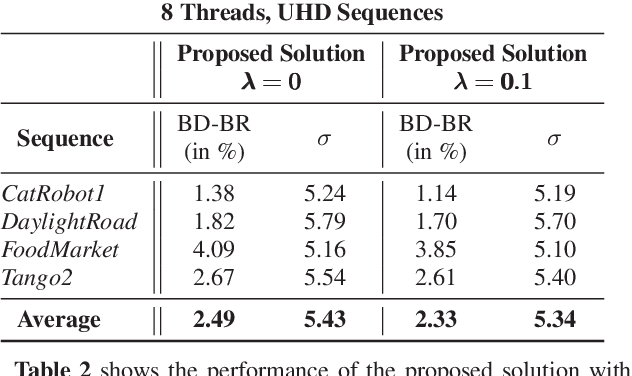
Abstract:VVC is the next generation video coding standard, offering coding capability beyond HEVC standard. The high computational complexity of the latest video coding standards requires high-level parallelism techniques, in order to achieve real-time and low latency encoding and decoding. HEVC and VVC include tile grid partitioning that allows to process simultaneously rectangular regions of a frame with independent threads. The tile grid may be further partitioned into a horizontal sub-grid of Rectangular Slices (RSs), increasing the partitioning flexibility. The dynamic Tile and Rectangular Slice (TRS) partitioning solution proposed in this paper benefits from this flexibility. The TRS partitioning is carried-out at the frame level, taking into account both spatial texture of the content and encoding times of previously encoded frames. The proposed solution searches the best partitioning configuration that minimizes the trade-off between multi-thread encoding time and encoding quality loss. Experiments prove that the proposed solution, compared to uniform TRS partitioning, significantly decreases multi-thread encoding time, with slightly better encoding quality.
 Add to Chrome
Add to Chrome Add to Firefox
Add to Firefox Add to Edge
Add to Edge